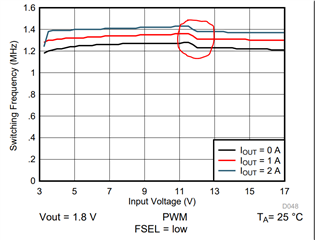Hi team,
My customer will use TPS62147 with Vin=12V, Vout=1.8V, fsw=1.25MHz. But Figure 74 shows switching frequency variation looks large around Vin=12V when Vout=1.8V.
- Why variation of fsw at below circled point is relatively large?
(Is there any operation mode change at this point?) - Is there any concern of deterioration of transient response at below point?

Best regards,
Shota Mago

